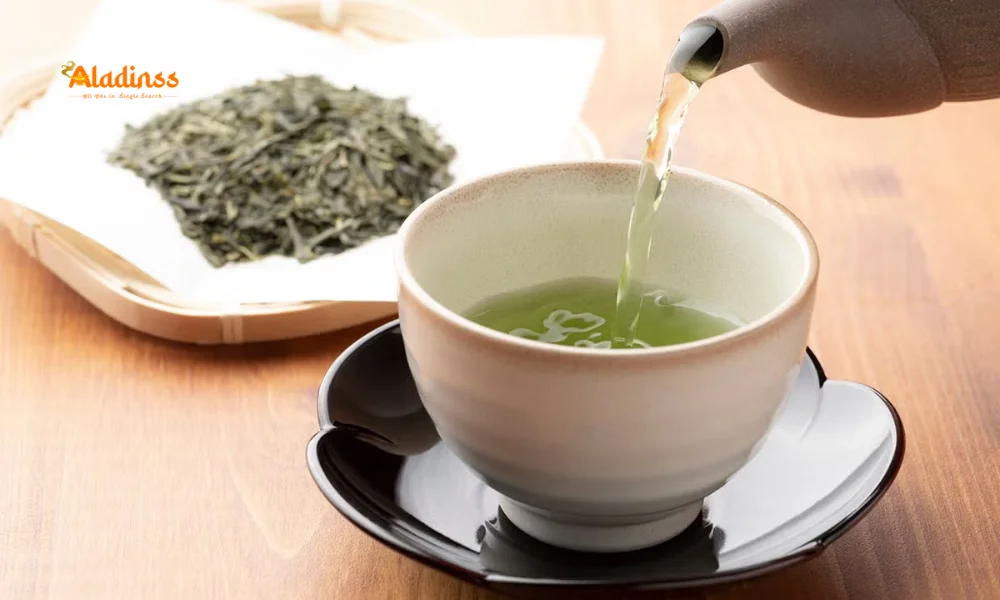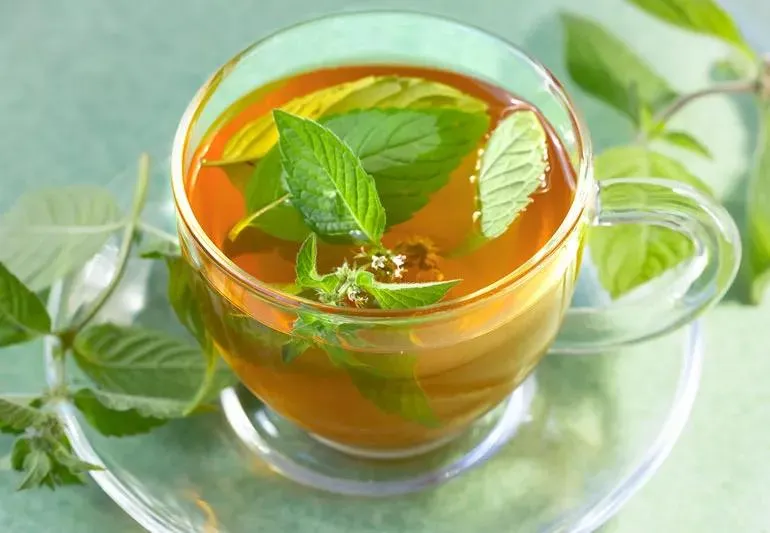Boost Your Health with Green Tea: Benefits and Tips for India

Boost Your Health with Green Tea: Benefits and Tips for India
Green tea has surged in popularity across urban India, transforming from a niche health drink to a household staple. Unlike traditional black tea, often enjoyed with milk and sugar, green tea offers a lighter, more health-focused option. Packed with powerful antioxidants called catechins, green tea is celebrated for its potential to enhance overall wellness. From hydration to weight management, this beverage is a simple yet effective addition to a healthy lifestyle. In this article, we explore the science-backed benefits of green tea, practical ways to include it in your daily routine, and why it’s a must-have for health-conscious Indians.

What Makes Green Tea Special?
Green tea is derived from the Camellia sinensis plant, the same source as black tea, but its processing sets it apart. Freshly plucked leaves are quickly heated, rolled, and dried to preserve their natural compounds, particularly catechins. These flavonoids give green tea its characteristic astringent and slightly bitter taste while contributing to its health benefits. In India, where tea culture is deeply rooted, green tea is gaining traction as a beverage that combines tradition with modern health consciousness. Available in various forms—loose leaves, tea bags, or flavored blends—it’s easy to find and affordable, with prices starting at ₹100-₹300 for a 100-gram pack in Indian markets.
The rise of green tea in urban India reflects a growing awareness of preventive healthcare. Nutritionists highlight its versatility, as it can be enjoyed hot or cold, plain or with a dash of lemon. Unlike sugary beverages, green tea offers a zero-calorie option when consumed without additives, making it ideal for those looking to maintain a balanced diet. Let’s dive into the specific health benefits that make green tea a game-changer for Indian consumers.
Hydration and Comfort
Green tea is an excellent source of hydration, a critical aspect of overall health. In India’s diverse climate, from humid coastal regions to chilly hill stations, a warm cup of green tea provides both hydration and comfort. During winter months, it’s a soothing alternative to sugary chai, warming the body while delivering essential fluids. For those in hotter regions, iced green tea with a hint of mint or lemon offers a refreshing way to stay hydrated. A single cup (about 240 ml) contributes to your daily fluid intake, supporting digestion, circulation, and temperature regulation.
Unlike caffeinated sodas or energy drinks, green tea provides hydration without added sugars or artificial flavors. Its mild caffeine content—typically 20-45 mg per cup—offers a gentle energy boost without the jitters associated with coffee. For Indians juggling busy schedules, a cup of green tea can be a quick, affordable way to stay hydrated and refreshed.
Weight Management Made Simple
For those watching their weight, green tea is a zero-calorie powerhouse when consumed without sugar, honey, or jaggery. In India, where obesity rates are rising due to changing diets and sedentary lifestyles, green tea offers a practical solution. Studies, particularly from Asian populations, suggest that catechins like epigallocatechin gallate (EGCG) in green tea may enhance fat oxidation and boost metabolism. This makes it a valuable addition to weight management plans when paired with a balanced diet and exercise.
In Indian households, green tea can replace high-calorie beverages like sugary chai or soft drinks. A morning cup before a workout or a mid-afternoon sip can help curb cravings for unhealthy snacks. Priced affordably, green tea is accessible at local stores or online, with brands offering packs as low as ₹150 for 25 tea bags. Its simplicity and effectiveness make it a go-to for anyone aiming to maintain a healthy weight.
Supporting Diabetes Management
With diabetes affecting millions in India, green tea’s potential to support blood sugar regulation is a significant draw. Preliminary studies indicate that catechins may improve insulin sensitivity and help modulate blood glucose levels. While more research is needed, these findings suggest green tea could be a supportive addition to a diabetes-friendly diet. For Indians, who often consume carbohydrate-heavy meals, incorporating green tea may offer a subtle way to balance blood sugar spikes.
To maximize benefits, drink green tea between meals rather than with food, as its compounds may interact with iron absorption. A small cup after lunch or dinner can be a refreshing ritual. With green tea widely available at ₹100-₹200 for a month’s supply, it’s an affordable option for those managing diabetes or prediabetes.
Promoting Heart Health
Heart disease is a growing concern in India, and green tea may play a role in cardiovascular health. Population-based studies, particularly from Japan and China, show a link between regular green tea consumption and reduced risk of heart disease. The antioxidants in green tea may help lower LDL cholesterol levels and improve blood vessel function. Additionally, some research suggests a positive association between green tea and reduced blood pressure, though further studies are ongoing.
For Indian consumers, replacing sugary beverages with green tea can reduce the strain on the heart caused by excess sugar and calories. A cup or two daily, paired with a heart-healthy diet rich in fruits and vegetables, can be a proactive step. Green tea’s affordability—often less than ₹5 per serving—makes it an accessible choice for heart-conscious individuals.
Boosting Alertness and Focus
Green tea contains a unique combination of caffeine and L-theanine, which work together to enhance mental alertness and focus. Unlike coffee, which can cause a rapid energy spike and crash, green tea provides a smoother, sustained boost. Research shows that L-theanine promotes relaxation without drowsiness, making green tea ideal for improving attention during work or study.
In India’s fast-paced urban environments, green tea is a popular choice for students and professionals. A mid-morning or afternoon cup can help maintain productivity without overloading on caffeine. With prices as low as ₹100 for 50 tea bags, it’s a cost-effective alternative to energy drinks or multiple cups of coffee.
Reducing Waist Circumference
Visceral fat, the harmful fat stored around internal organs, is a key contributor to lifestyle diseases. Human studies suggest that regular green tea consumption, combined with exercise and a balanced diet, may help reduce body fat, particularly around the waist. The catechins in green tea promote fat burning, making it a valuable ally for those aiming to trim their waistline.
In India, where traditional diets include calorie-dense foods, green tea can complement efforts to maintain a healthy body composition. Pair it with daily walks or yoga for best results. Affordable and widely available, green tea fits easily into any fitness routine, with packs costing ₹150-₹300 for a month’s supply.
Achieving Healthy Skin
Good hydration is the foundation of healthy skin, and green tea plays a key role. Its antioxidants protect skin cells from oxidative stress, while its hydrating properties help maintain a plump, radiant complexion. In India, where pollution and UV exposure can damage skin, green tea’s anti-inflammatory effects may help reduce redness and irritation.
Drinking green tea daily or using it as a face mist (after cooling) can enhance skin health. For Indian women and men seeking affordable skincare solutions, green tea is a natural, budget-friendly option. A 100-gram pack, priced at ₹100-₹200, can last weeks, making it a cost-effective addition to your beauty routine.
How to Incorporate Green Tea into Your Routine
Adding green tea to your daily routine is simple and versatile. Start with one or two cups daily, brewed for 2-3 minutes to avoid bitterness. Use loose leaves or tea bags, and experiment with flavors like lemon, ginger, or tulsi to suit Indian tastes. Avoid adding sugar to maximize health benefits, but a dash of honey can enhance flavor if needed. Green tea can be enjoyed hot in the morning or iced in the afternoon, making it adaptable to India’s varied climates.
For best results, source high-quality green tea from trusted brands or local vendors, ensuring it’s organic to avoid pesticide residues. Prices in India are budget-friendly, with 100 grams costing ₹100-₹300, depending on the brand. Store green tea in an airtight container to maintain freshness, and avoid brewing with boiling water to preserve its delicate compounds.
Why Green Tea Fits India’s Health Trends
India’s growing focus on wellness, driven by rising lifestyle diseases, makes green tea a timely addition to modern diets. Its affordability, accessibility, and versatility align with the needs of urban and rural consumers alike. Whether you’re a student, professional, or homemaker, green tea offers a low-cost, high-impact way to prioritize health. With prices starting at ₹100 for a month’s supply, it’s an investment that delivers long-term benefits.
As India embraces preventive healthcare, green tea stands out as a simple yet powerful tool. Its science-backed benefits, from weight management to heart health, make it a beverage worth sipping daily. Whether you’re in Mumbai’s bustling streets or a quiet village, a cup of green tea can elevate your health game without straining your wallet.
Comment / Reply From
No comments yet. Be the first to comment!






